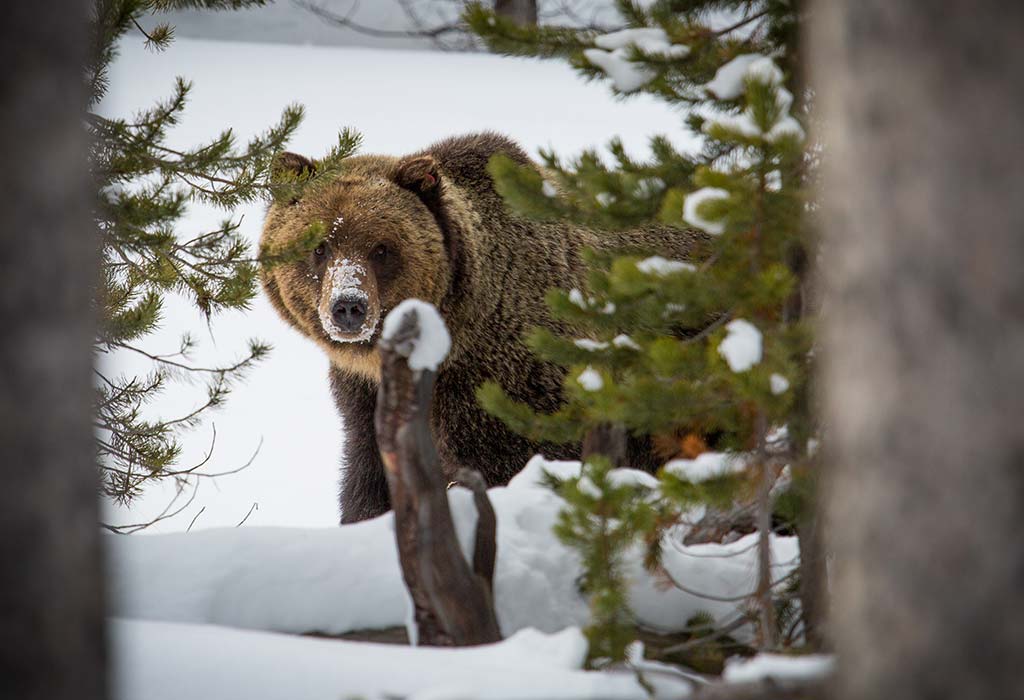Current work in wildlife, rivers, public lands, and climate
Press Releases
Court grants temporary relief for threatened grizzly bears
Today’s ruling halts the use of recreational wolf traps and snares “in all areas included in wolf regions one through five, plus Hill, Blaine, and Phillips counties, except during the time period when it is reasonably certain that almost all grizzly bear will be in dens: January 1, 2024, to February 15, 2024 ” until the court makes a final decision in the ongoing Endangered Species Act (ESA) case conservationists filed against the state on September 22nd, 2023.
“Plaintiffs have established serious questions on the merits and a reasonably certain threat of imminent harm to grizzly bears should Montana’s wolf trapping and snaring seasons proceed as planned,” the ruling states.
“We are pleased with this order and remain confident we will prevail on the larger merits of the case,” said Patty Ames, President of the Flathead-Lolo-Bitterroot Citizen Task Force. “The Montana Fish & Wildlife Commission remains a clear and present danger to Montana’s carnivores and predators and we look forward to reining them in.”
“We are elated that Montana’s grizzly bears will at least temporarily avoid the cruel harms caused by indiscriminate steel traps and snares in their habitat,” said Lizzy Pennock, carnivore coexistence attorney at WildEarth Guardians. “We are pleased that the Court saw the dangers of allowing these activities to continue, and we are optimistic that this win is a precursor to securing longer-term grizzly protections.”
In this lawsuit, conservation groups Flathead-Lolo-Bitterroot Citizen Task Force and WildEarth Guardians allege that the State of Montana is violating the federal Endangered Species Act by permitting indiscriminate traps to be set in known grizzly bear habitat during the non-denning seasons. The current distribution of grizzly bears in Montana overlaps almost entirely with areas where the Montana Fish and Wildlife Commission allows wolf trapping and snaring (see Figure 1 below)
While these traps are intended to capture wolves, non-target wildlife such as grizzly bears, pets, deer and even moose are at risk from being captured and maimed by these traps due to their indiscriminate nature. Grizzlies are omnivores with a broad diet, using their exceptional sense of smell to track down food. Traps and snares set with meat baits or lures for wolves or other carnivores, like coyotes, can easily attract grizzly bears
The conservation groups show, and the State agrees, that at least 21 grizzly bears—and likely many more that have gone unreported or undetected—have been maimed and captured in wolf and coyote traps in recent years in Montana. The wolf trapping regulations approved in August this year increase the likelihood of additional capture. Biologists in Canada have linked the loss of paws and toes in grizzly bears to damage from trapping and the groups’ supporting expert declarations reveal numerous grizzly bears in Montana with missing claws, toes, feet and lower legs almost certainly from traps and snares.
The lower-48 grizzly population, protected as a threatened species under the ESA, has less than 2,000 bears primarily occupying two “core” areas: the Greater Yellowstone Ecosystem—the northern portion of which is in Montana—and the Northern Continental Divide Ecosystem—entirely in Montana and covering almost 16,000 square miles of the northwest part of the state.
The lack of connectivity between these two population cores is a major obstacle to the ability of the lower-48 grizzly bear population to ‘recover’ within the meaning of the ESA. To achieve connectivity, grizzly bears must be able to disperse outside of the core areas into new locations. These connectivity areas are open to wolf trapping and snaring under the regulations approved by the Montana Fish and Wildlife Commission on August 17th, 2023, which expanded the areas where wolf traps and snares are allowed compared to the 2022-23 season. The Commission made these changes at the same time the State is calling on the U.S. Fish and Wildlife Service to remove ESA protections for grizzly bears.
The preliminary injunction was issued in response to a motion filed by conservation groups Flathead-Lolo-Bitterroot Citizen Task Force and WildEarth Guardians on September 22nd.

###